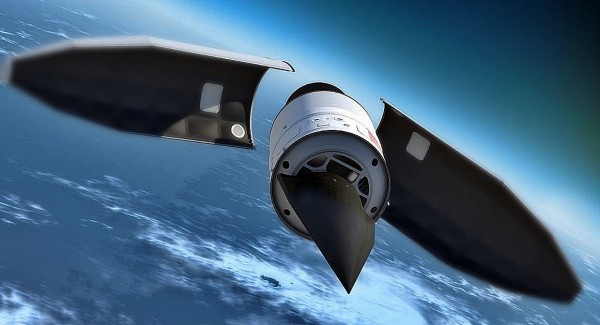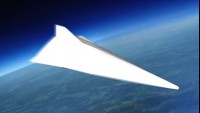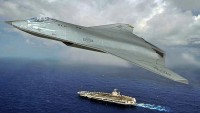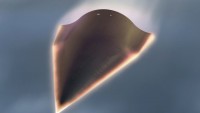US to Ensure Technological Edge over China and Russia in Hypersonic Weapons
| Arthur Dominic Villasanta | | May 11, 2017 08:52 AM EDT |
(Photo : USAF) Hypersonic glide vehicle (HGV) about to unleash from its deployment bus.
The U.S. Air Force will accelerate the development of hypersonic aircraft and weapons -- including hypersonic glide vehicles (HGVs) that can carry nuclear warheads -- to maintain its diminishing lead over China and Russia in this critical warfighting sphere.
Air Force senior leaders met last week to accelerate hypersonics research and development to ensure the U.S.' continued technological superiority.
Like Us on Facebook
Hypersonics refers to flying at five times the speed of sound, which is also known as Mach 5 (6,000 km/h) or higher. For the Air Force, hypersonics is a game-changing capability that can greatly enhance the speed, range, flexibility and precision of an aircraft or weapon.
"We must push the boundaries of technology in every area," said Air Force Chief of Staff Gen. David L. Goldfein.
"Our adversaries aren't standing still. They are looking for every advantage they can get."
An air force study acknowledged China and Russia are already flight testing hypersonic weapons.
"We're accelerating our research in this area," said Acting Secretary of the Air Force Lisa S. Disbrow.
"The benefits of this technology for our nation's defense are wide ranging, from offensive capabilities to defensive systems. This is a high priority for the USAF."
The air force has also laid the groundwork for a longer term coordinated effort in policy, operational concepts, science and technology efforts, acquisition, and test and evaluation.
Despite inroads made by China and Russia, the US remains top dog in hypersonic weapons development and is pouring money into a series of multimillion dollar projects.
The Pentagon continues to lavish money on hypersonic research with the goal of building hypersonic missiles that hurtle towards distant targets at between Mach 5 to Mach 20 (25,000 km/h). Funding for hypersonic research jumped 50 percent in the Department of Defense budget request for 2017.
The U.S. Air Force plans to test a hypersonic missile by 2020.
Among others, the Pentagon is funding the Lockheed Martin Falcon Hypersonic Technology Vehicle 2 (HTV-2) program; the Raytheon Hypersonic Air-breathing Weapon Concept (HAWC) and the Raytheon/Lockheed Tactical Boost Glide (TBG) program.
TagsU.S. Air Force, hypersonic weapons program, hypersonic glide vehicles, HGVs, china, Russia, Hypersonics, Air Force Chief of Staff Gen. David L. Goldfein, Acting Secretary of the Air Force Lisa S. Disbrow, hypersonic missile
©2015 Chinatopix All rights reserved. Do not reproduce without permission
EDITOR'S PICKS
-

Did the Trump administration just announce plans for a trade war with ‘hostile’ China and Russia?
-

US Senate passes Taiwan travel bill slammed by China
-

As Yan Sihong’s family grieves, here are other Chinese students who went missing abroad. Some have never been found
-

Beijing blasts Western critics who ‘smear China’ with the term sharp power
-

China Envoy Seeks to Defuse Tensions With U.S. as a Trade War Brews
-

Singapore's Deputy PM Provides Bitcoin Vote of Confidence Amid China's Blanket Bans
-

China warns investors over risks in overseas virtual currency trading
-

Chinese government most trustworthy: survey
-

Kashima Antlers On Course For Back-To-Back Titles
MOST POPULAR
LATEST NEWS
Zhou Yongkang: China's Former Security Chief Sentenced to Life in Prison

China's former Chief of the Ministry of Public Security, Zhou Yongkang, has been given a life sentence after he was found guilty of abusing his office, bribery and deliberately ... Full Article
TRENDING STORY

China Pork Prices Expected to Stabilize As The Supplies Recover

Elephone P9000 Smartphone is now on Sale on Amazon India

There's a Big Chance Cliffhangers Won't Still Be Resolved When Grey's Anatomy Season 13 Returns

Supreme Court Ruled on Samsung vs Apple Dispute for Patent Infringement

Microsoft Surface Pro 5 Rumors and Release Date: What is the Latest?














